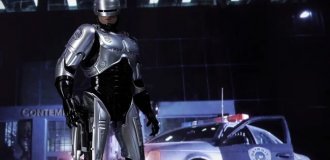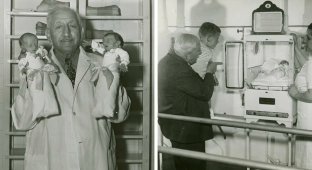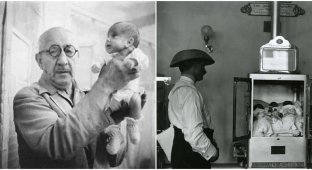Martin van Batchell is a dentist who did not want to part with wife and made a strange decision because of it (6 photos)
A reasonable degree of eccentricity is great. It's never boring with such people. But at the same time, this quality must have boundaries of manifestation that this character was not familiar with. 
Or he simply ignored them. 
Martin van Batchell
Quackery in dentistry has always existed. Almost from the moment people learned about dental problems, recognized them, and began to seek help from one or another doctor. Among those who offered treatment, there were both real dentists and charlatans. Charlatans were easy to recognize. They usually resembled showmen who went out on the streets, attracting patients with advertising and shock value, acrobatics, musical instruments, and even trained animals. Like other swindlers, these dentists were known for their lack of ethics and fraudulent treatment methods. 
One British dentist who was known not only for his quackery but also for his boundless eccentricity was Martin van Batchell.
The son of a tapestry maker, van Batchell was born in 1735. He trained in surgery under the Scottish anatomist and physician John Hunter, who was considered one of the leading obstetricians and anatomy teachers of the time. He later became interested in dentistry, possibly as a result of breaking one of his own teeth. 
Lady Garters Invented by Martin Van Batchell
Very soon Van Batchell started a very profitable and successful dental business, treating teeth and making dentures on Mount Street in Mayfair, London. Van Batchell was known for his creative advertising. His leaflets were filled with claims of painless treatment and ended with a whole list of medical accreditations. His fees were very high: he charged up to 2 guineas for a consultation, and a full set of false teeth cost 80 guineas. Unusually for the time, Batchell refused to make house calls, once even refusing the fabulous sum of 1,000 guineas to visit a patient at home.
Eventually, he began treating a wide variety of ailments, including fistulas, bedsores, abscesses and ulcers, sore legs, tumors, abscesses and more. Van Batchell was also something of an inventor, dabbling in a variety of projects. He designed and sold “elastic devices” to hold up gentlemen’s clothes and garters for women. He also invented stirrups with cork linings to prevent boots from slipping off, and designed an unusual bridle that included a curtain that could be “lowered over the horse’s eyes and raised again at will.” 
Van Batchell was also eccentric in his social life. He could often be seen on the streets with a long white beard and dressed entirely in white, riding a white pony, which he decorated with purple spots and sometimes black stripes.
Van Batchell was a friendly and cheerful man, but he was known as an eccentric. Among his eccentricities, one of the most notable was his refusal to call his children by name, instead whistling for them. He married twice, and gave each wife the choice of wearing black or white every day. The first wife chose black, and the second chose white.
When his wife died in 1775, the eccentric dentist was so reluctant to part with her that he ordered her body embalmed. Renowned surgeons and anatomists, brothers John and William Hunter, injected Mary's blood vessels with a solution and color additives to make her cheeks and lips glow. She was dressed in a wedding dress, and her embalmed body, complete with realistic glass eyes, was displayed in Van Batchell's living room for visitors. 
Van Batchell's exact reasons for keeping his wife are unknown. There was some speculation that there might have been a clause in their prenuptial agreement allowing him to use her property only as long as she remained unburied. Another theory was that it was a publicity stunt. The influx of visitors wanting to see his embalmed wife became so overwhelming that Van Batchell was forced to put up a notice forbidding unaccompanied visitors from viewing the body.
Van Batchell soon remarried, and his second wife was adamant that her predecessor should not be in the house permanently. Even in this form. As a result, the embalmed body was moved to the Hunterian Museum, where it was displayed until it was destroyed in a fire caused by the Blitz in May 1941.
Van Batchell died in 1814 and was buried in St George's Fields, London.
